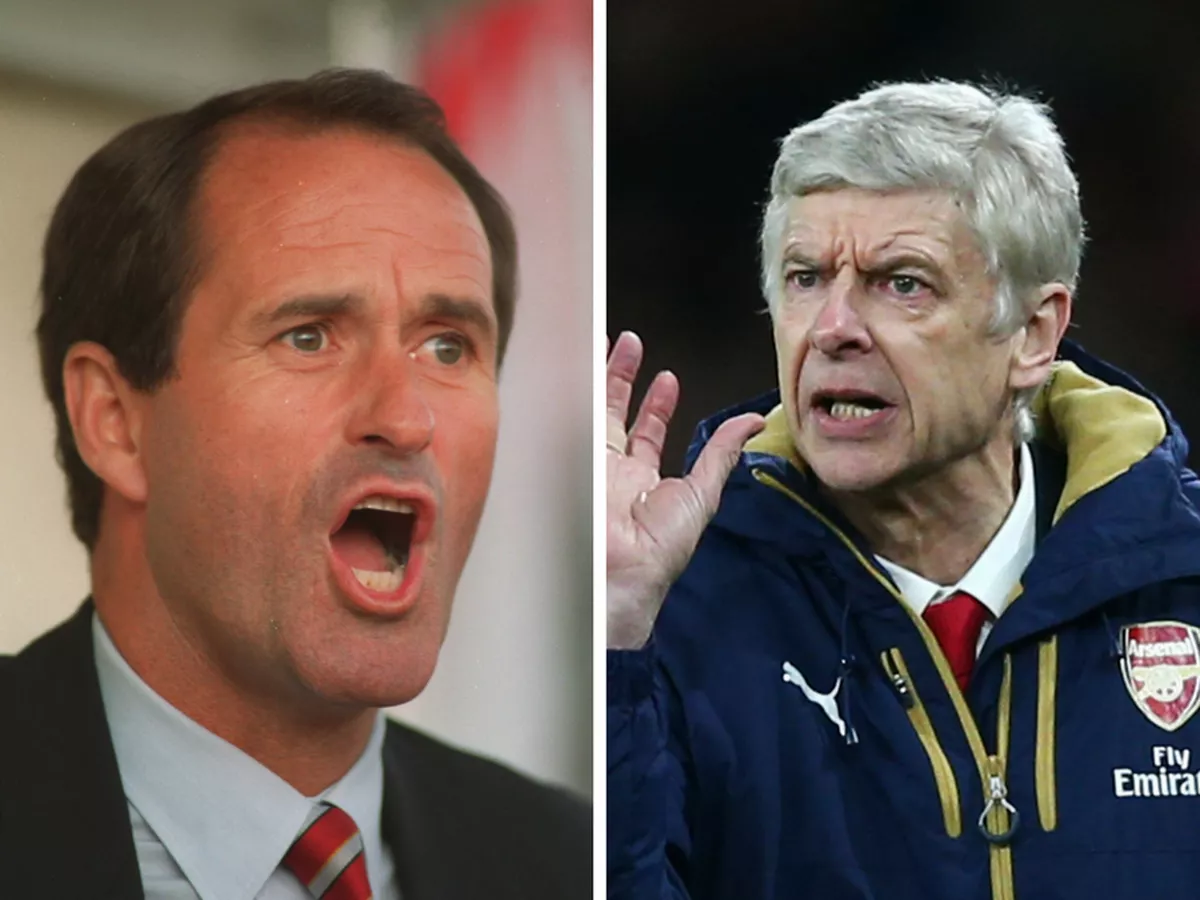Arsenal Football Club is one of the most storied institutions in English football, with a rich history that spans over a century. Known for their attacking football, strong emphasis on youth development, and a legacy of iconic players, Arsenal has experienced various tactical evolutions over the decades. From the defensive solidity of George Graham’s era to the free-flowing attacking football under Arsène Wenger, and the modern tactical innovations brought by Mikel Arteta, the club’s playing style has continually adapted to the changing landscape of the game. This blog will explore the evolution of Arsenal’s playing style through different managerial eras, highlighting key tactical shifts and philosophies that have defined the club’s identity.
George Graham: The Solid Foundation (1986-1995)
The journey of Arsenal’s playing style began in earnest under the stewardship of George Graham. Appointed in 1986, Graham implemented a philosophy that emphasized defensive discipline, organization, and a strong counter-attacking game. This period was marked by a significant shift in the club’s approach, as Graham sought to restore Arsenal’s competitive edge after a period of relative mediocrity.
Tactical Philosophy
Graham’s tactics revolved around a solid defensive foundation, characterized by a disciplined backline and a powerful midfield. His teams were known for their resilience, often absorbing pressure before launching rapid counter-attacks. The famous “1-0 to the Arsenal” mantra became synonymous with this era, reflecting the emphasis on grinding out results rather than seeking flamboyant attacking displays.
Key Players
The success of Graham’s tactics was largely dependent on the players he had at his disposal. Central defenders like Tony Adams and Steve Bould formed the backbone of the team, providing leadership and defensive stability. The midfield duo of Patrick Vieira and Paul Merson brought physicality and creativity, while strikers like Ian Wright capitalized on counter-attacking opportunities, showcasing the blend of strength and skill that defined Graham’s Arsenal.
Achievements
Under Graham, Arsenal won two First Division titles, two FA Cups, and the League Cup, marking a successful era for the club. The highlight came in 1994 when Arsenal won the UEFA Cup Winners’ Cup, showcasing their defensive prowess on a European stage.
Arsène Wenger: The Revolutionary Shift (1996-2018)
The appointment of Arsène Wenger in 1996 marked a watershed moment in Arsenal’s history. Wenger introduced a revolutionary playing style that transformed the club’s identity and challenged conventional norms in English football. His philosophy centered around attacking football, technical proficiency, and an emphasis on fitness and nutrition.
Tactical Philosophy
Wenger’s teams were known for their fluid, attacking style, characterized by quick passing, movement, and an emphasis on retaining possession. He favored a 4-4-2 formation that morphed into a more fluid shape, allowing players to interchange positions and create overloads in attacking areas.
Key Players
Wenger’s tenure saw the emergence of a plethora of world-class talents, including Thierry Henry, Dennis Bergkamp, and Patrick Vieira. Henry, in particular, epitomized Wenger’s attacking philosophy, using his pace, skill, and clinical finishing to devastating effect. The partnership between Bergkamp and Henry became legendary, showcasing the beautiful interplay that defined Wenger’s teams.
Achievements
Wenger’s impact was profound, leading Arsenal to three Premier League titles, including the historic unbeaten season in 2003-2004, which earned the team the nickname «The Invincibles.» His emphasis on attacking football and youth development reshaped the landscape of English football, establishing Arsenal as a dominant force in the late 1990s and early 2000s.
The Transition: The Post-Wenger Era (2018-2021)
Following Wenger’s departure in 2018, Arsenal faced a transitional phase as they sought to redefine their playing style and identity. The club appointed Unai Emery as head coach, who aimed to build on Wenger’s legacy while implementing his tactical vision.
Tactical Philosophy
Emery’s approach differed significantly from Wenger’s, emphasizing a more pragmatic and structured style. He often deployed a 4-2-3-1 formation, focusing on defensive solidity and quick transitions. While there were glimpses of attacking play, Emery struggled to instill a cohesive playing style, leading to mixed results during his tenure.
Key Players
Under Emery, players like Pierre-Emerick Aubameyang and Alexandre Lacazette became key figures in the attack. Aubameyang’s pace and finishing ability made him a crucial asset, while the creative talents of players like Mesut Özil provided moments of brilliance.
Challenges and Criticism
Despite reaching the Europa League final in 2019, Emery’s time at Arsenal was marked by inconsistency, tactical confusion, and a lack of a clear identity. This led to his dismissal in 2019, as the club sought to find a coach who could restore stability and redefine their playing style.
Mikel Arteta: The New Dawn (2019-Present)
The appointment of Mikel Arteta as head coach in December 2019 signaled a new era for Arsenal. A former player under Wenger, Arteta brought a fresh perspective to the club, aiming to blend elements of Wenger’s attacking philosophy with a more modern tactical approach.
Tactical Philosophy
Arteta’s tactics are characterized by a flexible 4-2-3-1 formation, which can shift into a 4-3-3 in various phases of play. His approach emphasizes high pressing, positional play, and creating overloads in midfield and wide areas. Arteta’s teams are built on solid defensive foundations, aiming to regain possession quickly and transition fluidly into attack.
Key Players
Arteta’s reign has seen the emergence of several young talents, including Bukayo Saka, Emile Smith Rowe, and Gabriel Martinelli. Saka, in particular, has become a key figure in the attack, showcasing his dribbling ability and creativity. The experienced presence of players like Thomas Partey and Kieran Tierney has provided stability, allowing the younger players to thrive.
Achievements and Progress
Arteta’s first major success came with victory in the FA Cup in 2020, where his tactical acumen shone through as Arsenal defeated Manchester City and Chelsea on their way to lifting the trophy. The team also showcased resilience in the following season, securing a place in the UEFA Europa League.
Tactical Innovations
One of Arteta’s notable innovations has been the use of inverted full-backs, where the outside defenders tuck into midfield during attacking phases, creating numerical advantages in central areas. This tactical flexibility has allowed Arsenal to control possession and dictate the tempo of matches.
Current Playing Style
As of the current season, Arsenal’s playing style under Arteta has continued to evolve. The team is known for its quick, incisive passing, high pressing, and ability to create goal-scoring opportunities from various areas of the pitch. The combination of experienced players and rising talents has given the team a dynamic edge, leading to an exciting brand of football that resonates with fans.
A Legacy of Evolution
The evolution of Arsenal’s playing style reflects the club’s adaptability and commitment to embracing change while staying true to its identity. From the defensive solidity of George Graham to the revolutionary attacking philosophy of Arsène Wenger, and now the tactical innovations of Mikel Arteta, Arsenal has continually redefined its approach to the game.
As the club moves forward, the integration of youth talents, combined with a modern tactical framework, ensures that Arsenal remains a competitive force in English and European football. The journey is ongoing, and with the right blend of players and tactics, Arsenal aims to reclaim its position among the elite, continuing a legacy built on style, flair, and a commitment to attacking football. The evolution of Arsenal’s playing style is not just a testament to the past; it’s a glimpse into a promising future filled with potential and ambition.


